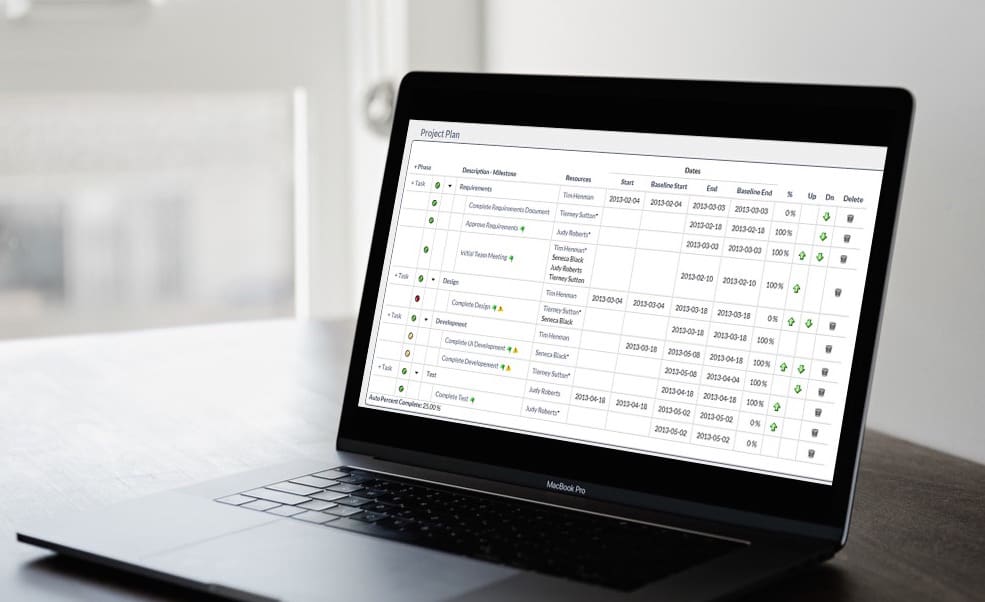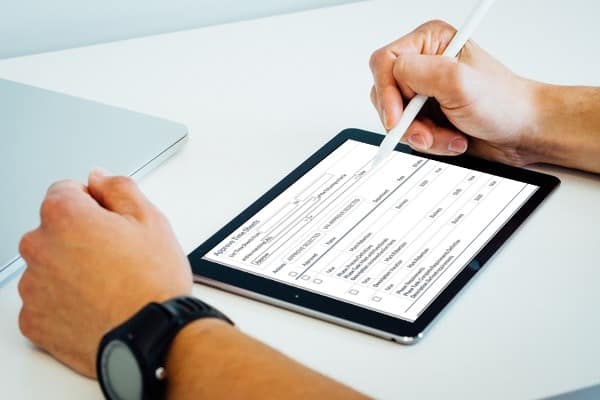Quick Take
- Project Portfolio Management (PPM) is essential to keeping a pulse on your organization’s projects
- In addition to high-level views of project progress, a good PPM solution enables you to dive deeply into the details of individual projects
- Robust, automated issue tracking is a must for effective oversight of the portfolio
- PPM solutions need to store granular data (such as Work Breakdown Structures and Time sheets) to ensure that the information presented is both accurate to the entire organization and relevant to Project Managers
Project Portfolio Management is All About the Data
Data is the lifeblood of every organization of any size. You wouldn’t run your account receivables without a ironclad accounting software solution. It’s the same for projects. If you can’t easily and immediately find out where your projects are at, your organization could be at risk, and you wouldn’t know it.
Project Portfolio Management is essential to the proper functioning of your projects. Your organization needs PPM as the system of record for your projects to ensure the health of your project portfolios. Generally, organizations deploy PPM software solutions to create the framework that ensures the right projects are selected and project progress monitors are in place so management can feel sure that everything is running smoothly.
Your PPM solution process must provide an aggregate portfolio view of all project plans for big picture analysis. But it also should offer visibility into data at the project level.
Portfolio owners and Program Managers must be able to review and edit individual project plans as well as visualize the work breakdown structure for each initiative.
Another required facet, the Project Portfolio Management issue tracking process, enables project level management to effectively handle problems and identify patterns to ensure the timeliness of portfolio goals.
To achieve these goals, your Project Management Portfolio Management solution should enable the following capabilities:
- Project Lifecycle
- Project Plans
- Work Breakdown Structure
- Issue Tracking
- Timesheets
We discuss each of these capabilities below.
Project Lifecycle
A Project Portfolio Management solution must have a process to organize all initiatives—on the launchpad or in-flight—and enable everyone to understand project status, from organization and portfolio management down to the project managers.
Mapping out your project lifecycle process enables you to manage proposed initiatives, gather information, manage active projects, and review your completed projects.
Your project management software can use the project lifecycle to answer questions such as:
- How many active projects do we have?
- When was this project placed on hold?
- Who proposed the most initiatives this year?
- Is my project done yet?
This process also facilities project postmortems and lessons-learned evaluations.
Project Plans
Your PPM solution must be able to aggregate and track project management plans across the portfolio and allow individual project plans to be examined and updated.
PPM project planning enables portfolio managers and project managers to create mock-up plans for initiatives that are still in the planning or inactive stage. This allows you to assign resources and timelines and perform “what-if” analysis against the entire portfolio.

Work Breakdown Structure
PPM solutions need to able to store data at a low level of granularity to ensure that the information presented is complete, accurate.,available to the entire organization, and relevant to Project Managers.
The Work Breakdown Structure (WBS) is usually a visual deliverable that breaks down the project plan into tasks, milestones, timelines, and resources necessary to complete the project. It may take the form of a Gantt chart created by your PPM software.
The WBS provides the information needed to answer questions such as:
- Which tasks or milestones are due this week?
- Who is responsible for Task A?
- What is the on-time rate for milestones on projects with this PM?
- Is my project done yet?
The WBS is also often used in lessons-learned sessions after the conclusion of a project.
Issue Tracking
All projects have issues—some are more disruptive than others in preventing projects from being completed on time, on budget, and delivering business value.
It is critical for the success of your projects and your portfolios to have a robust issue tracking function in your PPM software. Portfolio and project managers need timely information about issues and project risks.
The project issue tracking process:
- Identifies issues
- Quantifies the issue’s impact on the project
- Assigns the issue to an owner
- Provides updates on the issue
- Assigns timelines for resolution
- Notifies stakeholders
Project Portfolio Management software supports the tracking process and manages issues across the entire project portfolio. The project issue log enables you to identify trends, know the resources that can be assigned to resolve issues, and understand the impact of an issue on the portfolio.
Timesheets
Tracking resources’ time and comparing it with planned time is essential to avoid projects going off the rails. Your PPM solution needs to track resource utilization at the project level as well as at the task level. This is done by the timesheet function of your PPM solution.
Having timesheet data answers project level questions such as:
- Who worked on Project A last week?
- How many hours did we allocate for Task A vs. how many hours were actually spent?
- Did we exceed our project budget?
Timesheet data answers questions across the entire portfolio as well:
- What is the average amount of time we spend performing repetitive Task A?
- How much money have we spent doing Task B? Should we outsource this?
- Who is our fastest coder?
Timesheet data is also critical in forecasting project length and the resources needed for similar future projects.

Project Portfolio Management is Critical to Your Success
As you’ve seen, Project Portfolio Management is a complex process that requires software to implement properly. It is a critical function that keeps projects running on time and on target.
Project management ensures that your initiatives deliver! And PPM software helps ensure that your projects are a success.
To learn more about the additional benefits that PPM can deliver please read the “Definitive Guide to Project Portfolio Management.”

